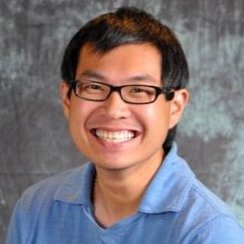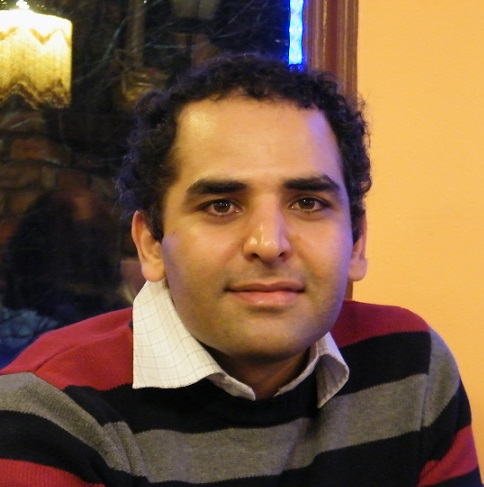January 2014 Newsletter: Volume 1, Issue 1
A Message From the Director, Jian-Ping Wang
Year One Review
Since C-SPIN Opened its doors a year ago, I've had a front-row seat for a productive whirlwind of meetings, reports, and world-class spintronics research. The Center is meeting (if not exceeding) its administrative and research goals, so we can all take pride in what's been accomplished and the groundwork that's been laid for at least the next four years. And by "we," I mean everyone: my co-Directors and Center manager, the Theme leaders, PIs, grad students and post-docs, undergraduate assistants, administrators, and even me. Thank you all for your exceptional work. I would also like to again thank our sponsors for their support of the STARnet program, including DARPA, Applied Materials, GlobalFoundries, IBM, Intel, Micron, Raytheon, Texas Instruments and United Technologies.
We are well-positioned for another excellent year. Now that our administrative wheels are in place, I expect that we'll be able to conduct more research, build stronger relationships with our academic and industry partners, and communicate with all of you more effectively in 2014. More on that below, along with a summary of our 2013 accomplishments. Read more.
We're Happy to Welcome Five New PIs to C-SPIN:
Maxim Tsoi of the University of Texas at Austin brings spin-transfer torque (STT) expertise to the Center. In fact, a paper he co-authored, “Excitation of a Magnetic Multilayer by an Electric Current” (Phys. Rev. Lett. May 11, 1998), laid the groundwork for much of the current STT research around the world. He will primarily work in Theme Four, where he plans to collaborate with C-SPIN PIs to develop technologies that reduce switching currents and lower switching speeds to sub-nanosecond levels. He also expects that his University’s microwave probing equipment will help C-SPIN PIs determine the magnetic dynamics of materials they develop.
Geoffrey Beach of MIT will work with PIs in Theme One and Theme Four to develop new interface materials. In particular, he hopes to combine basic research and materials engineering to study and test a number of materials that enable spin orbit coupling to lower switching currents. He also plans to study the magnetic effects of electric fields so that he and other PIs can better control the magnetic properties of oxide interfaces.
Weigang Wang of the University of Arizona hopes that his work characterizing the electric field effect, in conjunction with the work of Theme One and Theme Four PIs, will lay the groundwork for fabricating perpendicular tunnel junctions with large magnetoresistance and low switching energy. He will also study novel oxides that are promising candidates for tunneling barriers. He expects that his lab’s deposition system, which can incorporate 12 different sputtering sources, will be useful to the Center as a tool for testing new materials and new nanoscale transistors.
Mingzhong Wu of Colorado State University expects that, in the short term, his expertise in measuring magnetic damping and developing ferrite materials will contribute to his work in Theme One and Theme Three. He expects that Colorado State University’s two vector network analyzers, which are among the few in the spintronics community that can measure at frequencies up to 110 GHz, will be used by C-SPIN PIs in the years ahead to analyze the response of various magnetic materials.
Jeff Bokor of Berkeley brings a wealth of experience to C-SPIN. He has been studying nanoscale engineering and magnetic materials for over 30 years, including 13 years at Bell Labs and over 20 years at UC Berkeley and the Lawrence Berkeley National Laboratory. He was also a PI for Materials, Structures, and Devices, a SRC Center that ended its decade-long run last year. He will focus on reducing switching times to the picosecond scale by means of non-equilibrium magnetic switching, which involves heating electrons to nearly 1000º K and then controlling spin direction as they cool.
Student and Post-Doc Profiles
Xuanyao (Kelvin) Fong
Ph. D. Candidate at Purdue University
I’m currently working on designing STT-based memory and logic architectures (Theme 5).
I got interested in computer research when I began studying CMOS devices as an undergraduate. I was fascinated by the challenge of scaling down circuits and improving performance at the same time. I joined Professor Roy’s lab and haven’t looked back.

I love being a research scientist. It’s an outgrowth of my childhood love of physics and the thrill of discovering and examining different phenomena. I also love the interaction with other scientists and how different perspectives combine to produce important new research.
My career goal is to stay in academia as a research scientist. I always want to be exploring new ideas and novel concepts – that’s what I find exciting. I don’t want to know what I’ll be studying in 10 years.
I also like to help foreign students new to the University. When I came to Purdue from Singapore in 2003, I didn’t have much help and got kind of stressed out. Just knowing how to get to a store without walking three miles would have made a big difference.
Mahdi Jamali
Post-Doctoral Researcher at the University of Minnesota
I’m currently working on developing and testing materials and devices for spin-based logic devices (Theme 1). My particular focus is developing perpendicular magnetic tunnel junctions and giant magnetoresistance stacks and integrating them with spin logic devices

Electrical and computer engineering is my passion. I've always loved mathematics, and I've always wanted to understand fundamentally how electronic devices work.
Even though my PhD is in Electrical Engineering, I have a strong background in physics as well as mechanical engineering.
I studied for my Ph.D. in Spintronics. I wanted to focus on spintronics after working on CMOS circuit design for my Master's. I saw early on that spintronics held the promise to supersede CMOS limits. During my Ph.D. study in Singapore, I focused on different aspects of spintronics, including investigating spin orbit torques and spin pumping dynamics. I expanded this effort to novel perpendicular magnetic materials and its integration with different spin channels after joining Prof. Jian-Ping Wang's group. While working on the Ph.D., I published nine papers; since then, I've published four more.
I’m currently applying for jobs in academia, but I’m open to industry work as well. Whatever I do, I expect to stay on the forefront of spintronics research



